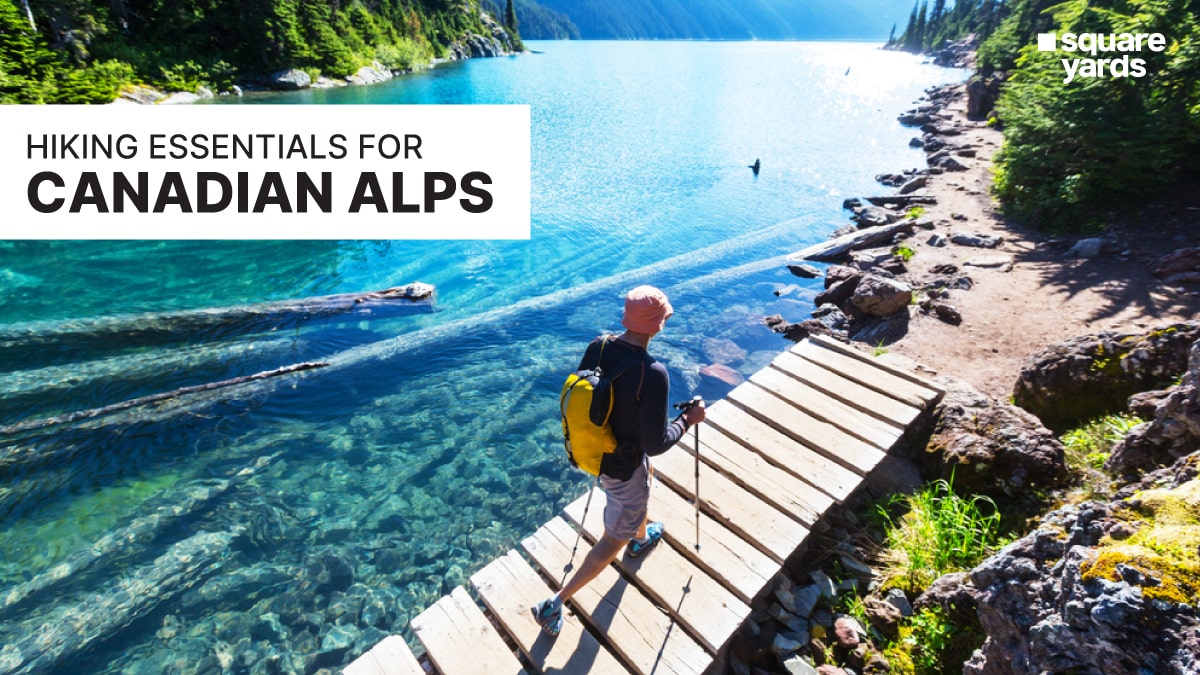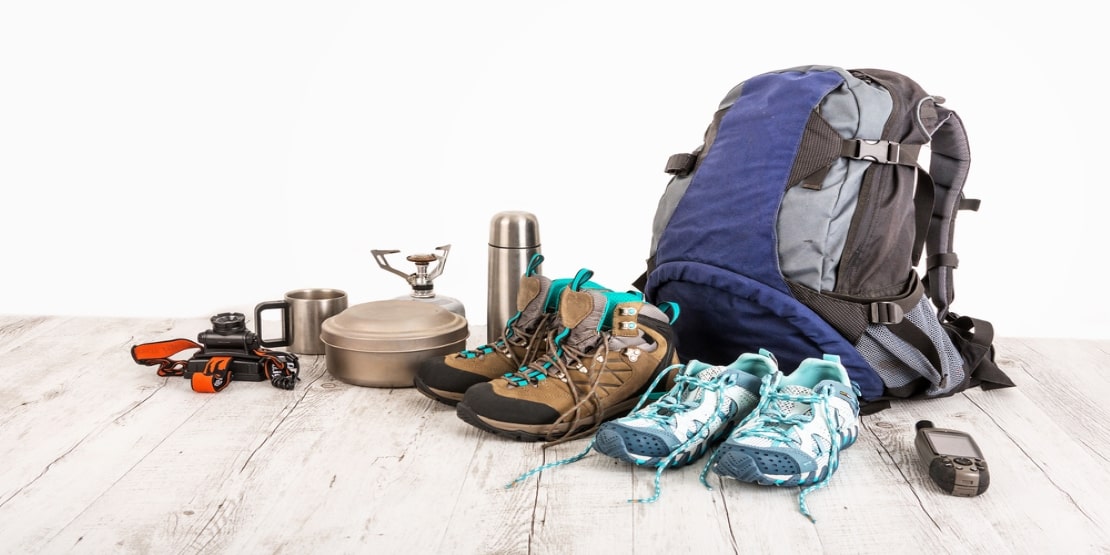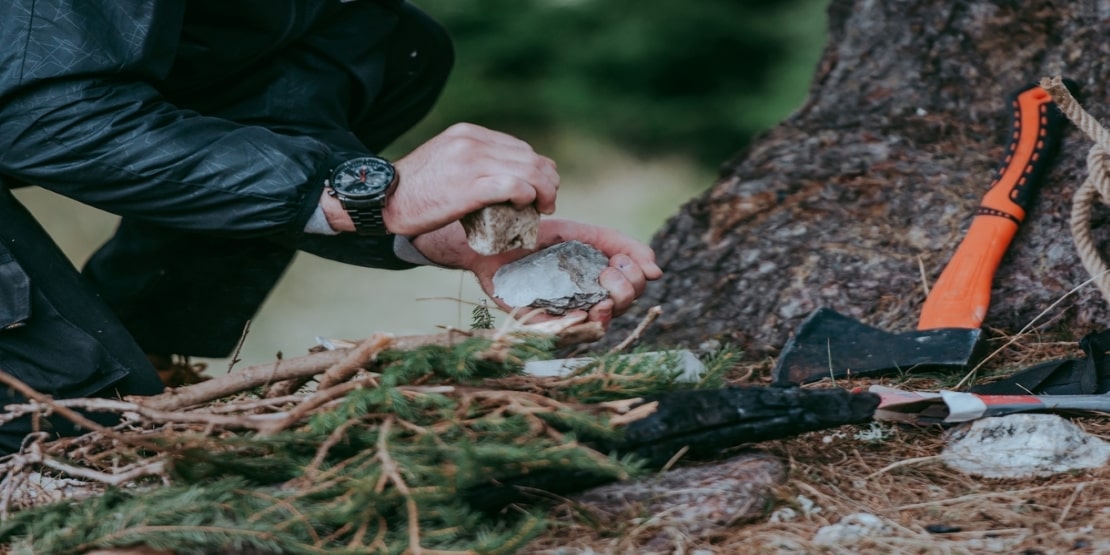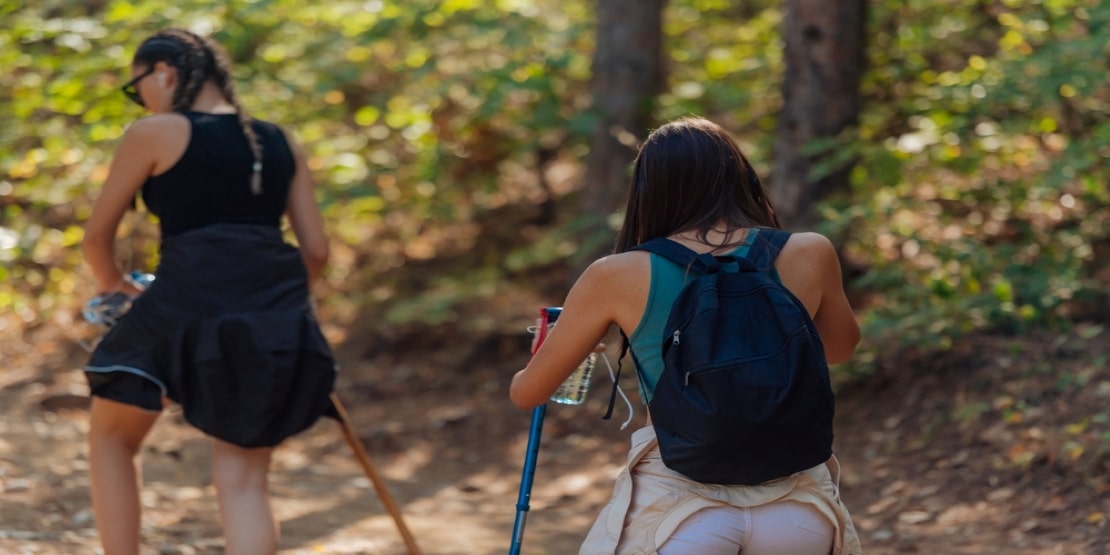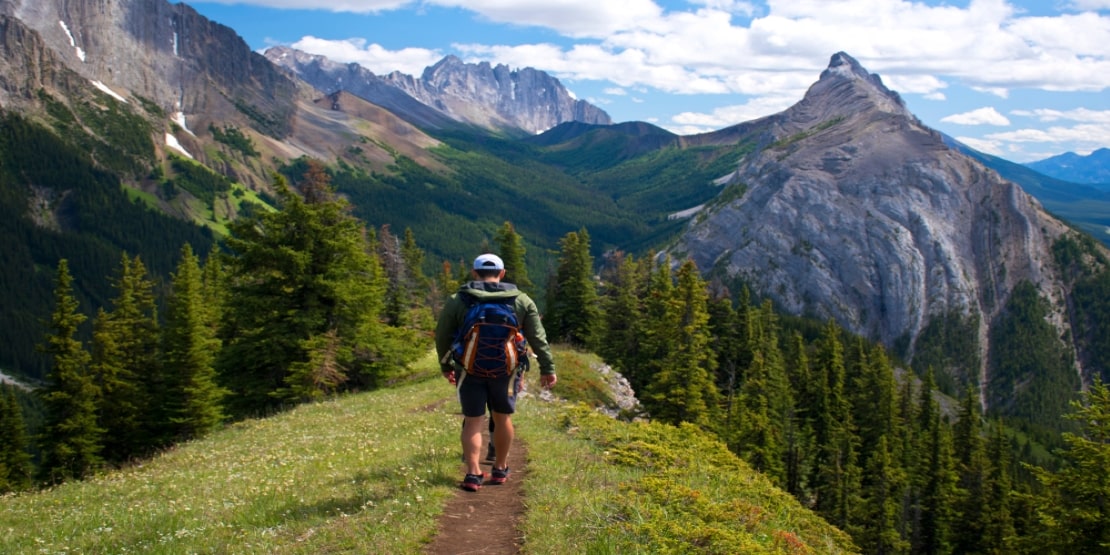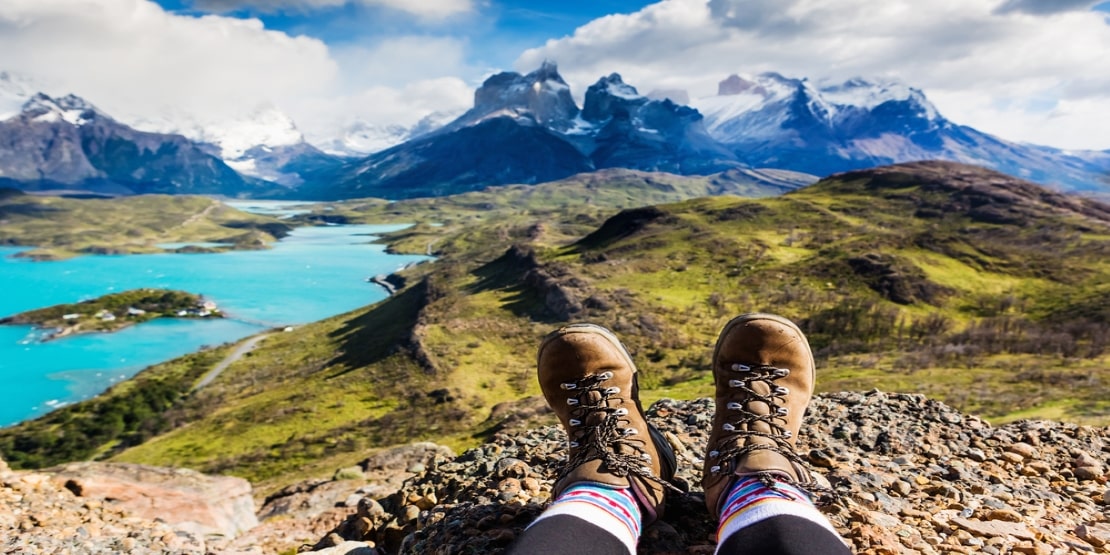Hiking is a joyous adventure that has been gaining attention and popularity off late. When one plans to go on a hike, they are always worried about what gear and clothing or any other hiking essentials for beginners to opt for. Whether it is a one day plan or an expedition for a few weeks, it is important to equip your bag with the hiking essentials for safety purpose.
Uncertain changes in the weather, health problems, trail changes and gear failures can lead to a disastrous plan. On a barren hike, you won’t be able to find anything. However, packing the hiking essentials in advance will be a saviour.
The ten mentioned hiking essentials for the beginners by the hiking association will be discussed in this article.
What is the Most Important Hiking Essential?
In the 1930s, The Mountaineers, an organization based in Seattle, made a list of top ten hiking essentials that one should have with them. But over the years, the list had some modifications. The most important essentials help in assuring that one has the things to deal with emergency situations.
In the present times, the list has an approach of “systems” feather than listing out every single essential item. A backpack for hiking is the most important item, in which one can carry all the other essentials. The top 10 hiking safety essentials listed by the organization are as follows:
-
Checklist – Safety Hiking Essentials for beginners
-
- Navigation Tools and Fire Starter – It is one of the most important hiking requirements that help the hikers to follow the right pathway on their hiking journey. It includes a compass, GPS, personal locator beacon (PLB), altimeter or a satellite messenger.
- Headlamp and Communication Devices – To keep your hiking pathway lit up and contact the people when in or the whole time, keep a communication device and a light in your bag. Also, with the lamp, make sure you keep extra batteries in your backpack.
- Sun Protection Tool – Sunglasses, hats, and full-sleeve clothes are a few things that you should keep with yourself. These things help you get protection against the harsh sun rays.
- First Aid Kit – A first aid kit is a must hiking essential for the journey. Keep insect repellents, foot cream, and emergency medicines handy during hiking.
- Shelter – A shelter is a necessity that a hiker should always carry with them. The shelter can be a saviour when you go for long hiking and there’s no nearby lodging solution.
- Food, water and Extra Set of Clothing – Keep food, water, and clothing in an adequate supply. It will help when you are stuck on a barren hiking journey.
All these hiking essentials can be tailored as per the hiking trip you are opting for or shorter hikes, shelter and clothing are not a necessity. However, for longer hikes, you should carry shelter and other items with you.
What is the Basic Skill in Hiking?
Hiking is not as easy, as it needs a lot of courage, skills and dedication. The long journey is a peaceful approach to refresh and calm down your mind, soul and body. The breathtaking view and fresh breeze felt on your face, make hiking special and fun.
In an effort to achieve that, one needs to learn the basic skills. These competencies help in making hiking easier and gaining more experience. Below are the basic skills that count as a hiking essentials for beginners and required for hiking:
-
Planning And Equipment
Planning the hike in advance is one of the major skills, followed by hiking essentials. A significant amount of research can help to make your hike smooth. This can include knowing the weather conditions, availability of resources or knowing about the plains. It is crucial to ensure that you have adequate pieces of equipment to make your trip a successful one.
-
Picking Footwear Wisely
Shoes are the perfect pair of footwear for hiking purposes. However, not all kinds of shoes will accompany your journey. A wrong pair can cause foot pain and make your hike sickening. A delightful walk requires you to invest in a good pair of shoes and also the right kind of socks. By just going a few steps to ensure that the footwear is tailored as per your size and comfort, you can make a difference.
-
Stay Ready And Pick Your Pace
When you start hiking, you may feel better, empowered or sometimes worried. It is all the game of your pace. Therefore, it is important to pick a pace and maintain it throughout the walk. Also, focus on the beautiful surroundings by walking in an opposed direction. The best part about hiking is that it is nothing like a race. You can take hours to complete the walk on the terrain and no one would complain about it.
What Should Beginners Wear while Hiking?
When on the terrains, hiking safety essentials are the first thing that you should consider. After footwear, clothing is a crucial part of a successful walk. As a new hiker, you must be wondering what to wear and what not to. Hiking clothes can be confusing at times, but once you get in tune with hiking layering, you can change the world.
A few factors should be considered when choosing clothing, such as creating a balance between sun protection and still having space left to breathe freely.
-
Hiking Essentials Top Layering
The top layering should be comfortable and give space to the hiker for breathing. The upper body clothing hiking essentially depends upon the weather conditions of the terrain. In freezing weather, multiple layering of clothing is important while for hotter weather, one layer can be enough. A wide range of hiking tops is available in the market to accompany the hikers on the trail. Choose the ones you are comfortable in. if you do not wish to wear long sleeves in the scorching heat, then keep reapplying sunscreen to save from the harsh UV rays. For cold conditions, go for a base shirt with a fleece mid-layer and layer it will a puffer or rain jacket that will provide protection against the cold waves and rain too.
-
Hiking Lowers Layering
Just like the top, the lower layering is also crucial for hikers. As the hiking safety essentials, you do not need to buy warm pants. Many hiking lowers are used for all seasons. As a result, they will keep you warm in the winters and cool in the summers. They are also comfortable, so you will be able to win the hike without any restrictions.
What are the 5 types of Hikes?
Each individual prefers their own style of hiking. Some choose to hit the terrains at the deck of dawn, some may follow the route to end their journey in a month, whereas some go for a few hours of hiking. A vast majority of hikers will opt for the five types of hikes most often. These five hikes are described in detail below:
-
Day Hiking
Walking through the trail before the sun goes down is what describes the day hiking the best. Even when you talk about the gears, it has a similar name to the bike, known as hiking daypacks.
Day hiking is the most simplified form that can also be a meditation walk for the hikers. It is short, refreshing, and relaxing with the minimum hiking essentials stuffed in your bag.
-
Summit Hiking
Want to look at the city from the top of a hill, then summit hiking is the one for you. Going uphill is tough, but at the same time helps in building the strength of the lungs and legs. Summit to the top demands continual conquests, sometimes even on the steep terrains also. Even while travelling down, the same difficulties will be in the way too.
There are numerous hiking essentials, but a good pair of boots is a must. Choose clothing and other gear depending upon the weather of the route. The uphill views will be a bounty for your efforts that last lifelong.
-
Long-Distance Hiking
Won’t a long walk for a few days or a week is the best way to take a break from strenuous everyday life? Indulging to understand the magic of long-distance hiking. Usually, it includes trails as long as 30 miles and more. This is recreational hiking that helps the hikers to ease their strains occasionally.
When one opts for long-distance booking, it is important to keep all their hiking safety essentials for the trip. Along with tools, it is important to plan everything in advance as it offers a range of experiences. This trail is challenging and demands a lot of endurance and perseverance.
-
Base Camping
Everyone wants to experience the celestial beauty of stars lying on the green field once in their lifetime. Base Camping is the best way to make your wish true. If you are planning to go on a long hike and come back to a palace to relax, you can set up a tent on the downhills of the hiking area. This is the most beneficial option for hiking, It is because you will no longer be required to carry the heavyweight on your back all day long. Since you have a place to return, you can simply take the things that you would need during your aisle.
The people who opt for base camping prefer the wilderness of ground rather than an organised campground. The base camping is the road to be in the lap of nature for a few days away from the hustle and bustle of a busy life.
-
Back-Packing
Except for the concept of day hiking, rest all the hiking mentioned above comes under the backpacking. Backpacking is one of the most common hikes opted for getting a blissful view of nature. In this, the people would carry all the mandatory instruments in the backpack to be assured and stay out for days to enjoy their trip.
A wise approach is crucial for backpacking. This way, you will not overdo it and make your backpack heavy. In backpacking hikes, it is important to consider the weight of the bag on your back and keep it as light as possible to comfortably complete the trip.
What Should You Not Do while Hiking?
Hiking is adventurous and a bit dangerous too. To be on the right track, it is significant for the hiker to not do a few things for safety. Here is the list hiking essentials for beginners that you should not do while hiking:
-
- Do not go off the hiking path
- Avoid playing loud music
- Say no to headphones when on the trail
- Do not drink alcohol when walking
- Avoid eating wild fruits
- Do not litter the space
- Do not throw rubbish in the stream
- Do not ignore any medical circumstances
- Discontinue your hike in the dark
- Do not click pictures when walking
Bottom Line
Hiking comes with a lot of planning and responsibilities. When you plan to go on the trail, you need to plan the hiking safety essentials. There is no option to leave them behind in any situation. If the hiking essentials are missing, the chances of facing trouble on the trip are high. The listed hiking essentials for the beginners need to be planned as per the place, weather conditions, and availability of resources on the route. Hiking is fun and it will be more fun when you take care of all these points.
You May Also Read
| Best Hikes in Alberta with Guide | Prehistoric Caves in Canada |
| Best Cities for Cyclists in Canada | Most Haunted Place in Canada |
| Best Beaches in Canada | Fun Things to Do in Toronto |
Frequently Asked Questions (FAQs)
The foremost duty is to pack the hiking safety essentials, use the three-layer perspective, get in shape, and prepare a list of items that you need to pack before you go on a hike.
Both trekking and hiking are different from each other. Trekking refers to covering a difficult and long journey on foot. Hiking long and blissful walk in the countryside.
Yes, hiking is as good as walking and is one of the best cardio workout options. It helps in reducing the heart disease risks, boosts the density of bone, and manages blood sugar and blood pressure levels.
Since hiking is a cardio exercise, it can easily help the hiker to burn fat. With fat burn, hiking also helps in building muscles.
There are a few hiking essentials for beginners that one should swear by before going on a hike. These essentials are a daypack, the right layers for hiking, sun protection tools, and navigation tools. How do I prepare for hiking?
Is hiking the same as trekking?
Is hiking as healthy as walking?
Can I burn fat by hiking?
What are the hiking essentials that one should swear by?

